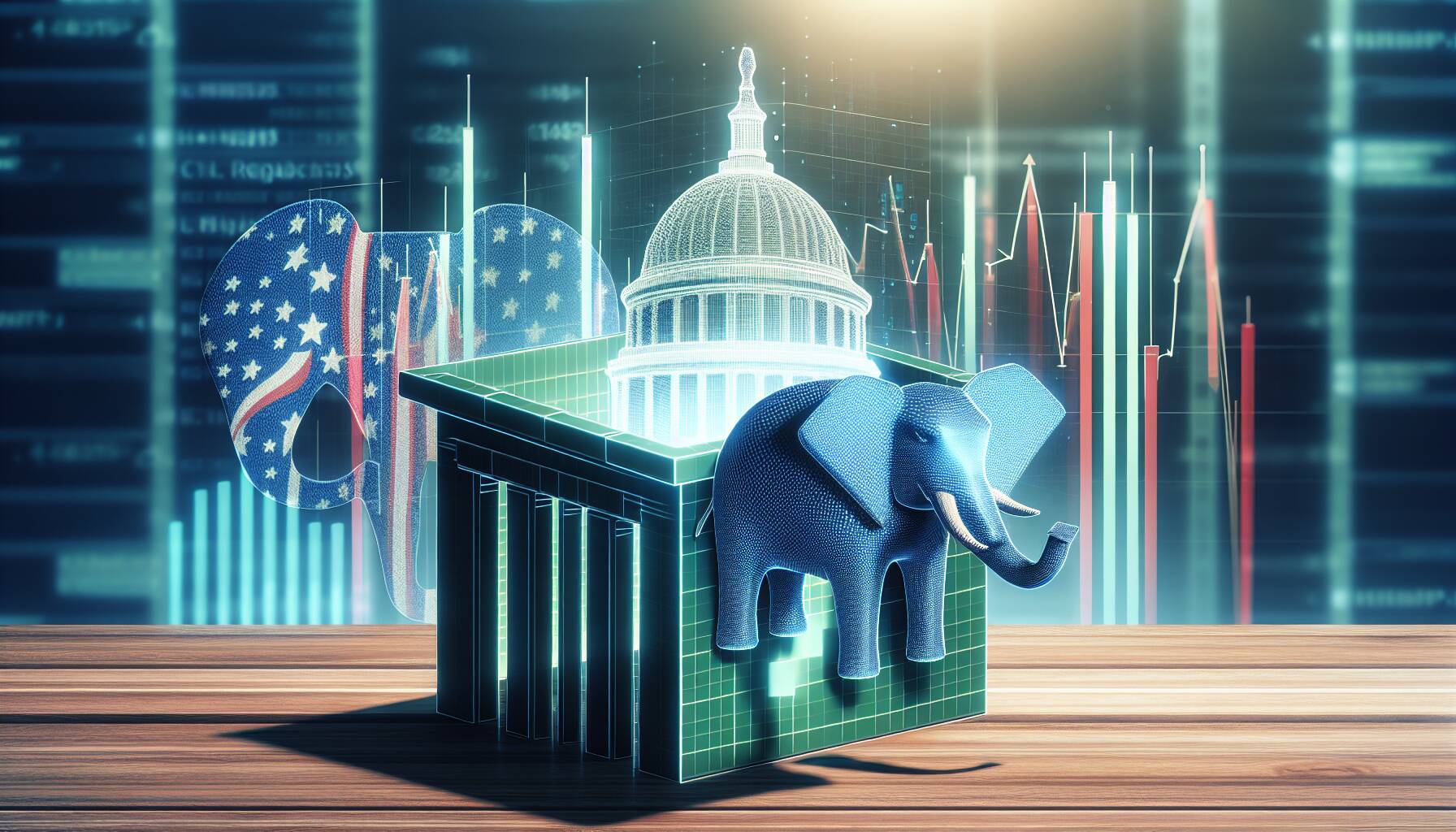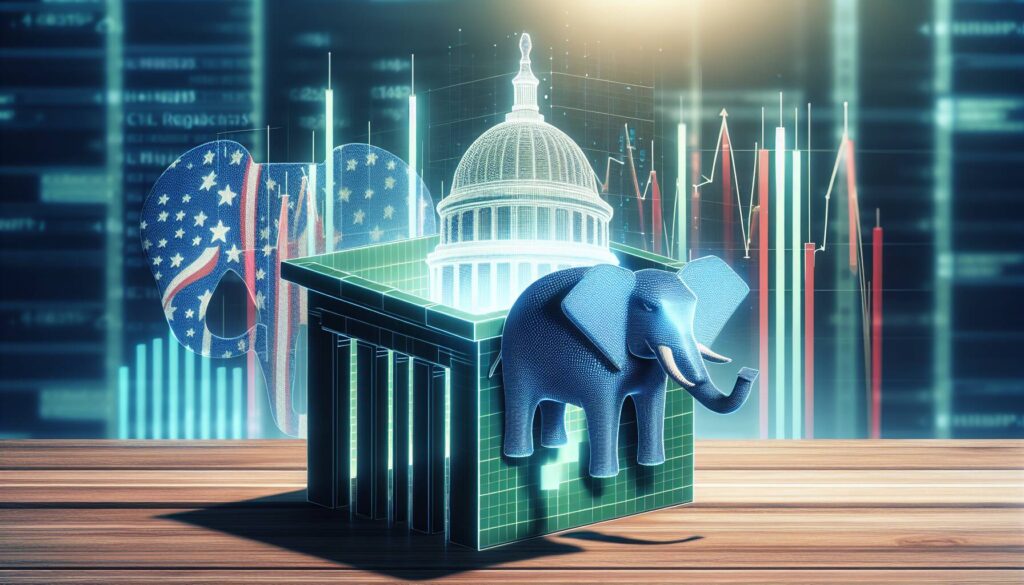In a significant move for the cryptocurrency industry, leading Republicans in the House of Representatives have unveiled the Digital Asset Market Clarity Act, a crucial piece of legislation aimed at creating a regulatory framework for digital assets. This introduction marks a continuation of their efforts following the previous Financial Innovation and Technology for the 21st Century Act (FIT21) and reflects the industry’s long-standing call for clearer regulations. The proposed bill emphasizes the importance of establishing the U.S. as a global leader in digital assets while ensuring a solid regulatory infrastructure.
Representative Dusty Johnson, who chairs the agriculture subcommittee focused on digital assets, highlighted the need for clarity in regulation, stating, “America should be the global leader in the digital assets marketplace, but we can’t do that without establishing a clear regulatory framework.” The comprehensive 236-page Clarity Act outlines a system where the Commodity Futures Trading Commission (CFTC) would hold exclusive regulatory jurisdiction over most digital commodity cash markets, a step that aligns regulatory oversight with the bulk of cryptocurrency activities currently in play.
The legislation is set to provide crypto platforms with options for registering with either the CFTC or the Securities and Exchange Commission (SEC), depending on the nature of the digital assets being traded. This regulatory choice aims to streamline operations and instill confidence within the market. Moreover, the bill seeks to establish strict compliance requirements under the Bank Secrecy Act, while also carving out exemptions for certain decentralized finance operations and wallet providers.
“Despite similar timelines in the Dodd-Frank Act of 2010, there are still a few provisions that haven’t yet been completed.”
The Clarity Act also calls for a thorough examination of decentralized finance by the SEC, CFTC, and Treasury Department, with findings expected within a year. This indicates a cautious yet proactive approach to addressing the complexities surrounding these emerging financial technologies. The timeline set forth by the bill for implementing these rules underscores the urgency felt by lawmakers, even as the intricate nature of financial regulations often leads to prolonged deliberations.
As the Senate gears up for discussions on its stablecoin legislation, questions remain on how the two regulatory efforts will interact moving forward. While there is a push for both stablecoin and broader market structure regulations to move swiftly through Congress, insiders express skepticism about achieving such ambitious timelines. With upcoming hearings planned in relevant House committees, stakeholders are poised to engage in meaningful dialogue about the future of cryptocurrency legislation in the United States.

Digital Asset Market Clarity Act Overview
Key points regarding the recently introduced Digital Asset Market Clarity Act and its potential impact:
- Introduction of Clear Regulations:
- The Digital Asset Market Clarity Act provides a formal regulatory framework for digital asset markets.
- Establishes the Commodity Futures Trading Commission (CFTC) as the primary regulator for digital commodity cash or spot markets.
- Registration Options for Crypto Platforms:
- Crypto platforms can register with either the CFTC or the Securities and Exchange Commission (SEC) based on the type of digital assets they trade.
- Provisional registrations for platforms while rules are being developed increase flexibility in compliance.
- Compliance with Financial Regulations:
- Crypto platforms will be regulated under the Bank Secrecy Act, enhancing financial oversight.
- Decentralized finance (DeFi) operations and wallet providers might be exempt from SEC oversight, reducing bureaucratic barriers.
- Focus on Stablecoins:
- Payment stablecoins are clearly distinguished as non-securities, simplifying regulations around them.
- Future regulatory authority over stablecoins lies with the existing regulator of the firm involved in the transaction.
- Regulatory Reports and Timeline:
- Regulators are required to study DeFi and NFTs, with reports due within a year, guiding future legislation.
- Implementation of market structure rules is expected to occur within a tight one-year timeframe post-enactment.
- Impact on Investors and the Market:
- A clear regulatory framework may lead to increased investor confidence in digital assets.
- Bipartisan support and discussions in Congress indicate a potential shift towards recognizing cryptocurrency as a legitimate financial asset.
Comparative Analysis of the Digital Asset Market Clarity Act
The introduction of the Digital Asset Market Clarity Act in the House marks a significant step towards establishing a formal regulatory framework for the digital assets sector, a development long awaited by industry stakeholders. This bill, succeeding the previous Financial Innovation and Technology for the 21st Century Act, positions itself as a comprehensive approach to managing crypto markets, yet it brings with it both competitive advantages and disadvantages when compared to similar legislative endeavors in the pipeline, like the Senate’s stablecoin bill.
Competitive Advantages: One of the primary advantages of the Clarity Act is its ambition to provide a clear regulatory structure by granting the Commodity Futures Trading Commission (CFTC) exclusive jurisdiction over digital commodity cash or spot markets. This designation could streamline compliance for crypto platforms and allow them to operate under a well-defined regulatory umbrella. Furthermore, by offering provisional registrations for exchanges during the rule-making period, the Act encourages innovation while ensuring oversight—an appealing arrangement for many in the crypto sector. The differentiation between securities and commodities establishes a meaningful framework that could increase institutional participation in the digital assets space.
Competitive Disadvantages: However, the bill also has its drawbacks. The one-year timeline for regulators to draft rules may prove to be overly ambitious given the complexity of financial regulations, which historically takes much longer. This urgency might lead to hasty or incomplete regulations that could stifle growth rather than foster it. Moreover, the postponement of addressing DeFi regulations until after further study presents uncertainty for projects in the decentralized finance space, potentially alienating innovative businesses that rely on this model.
This legislation could benefit established crypto firms and institutional investors looking for clarity and stability in the market, allowing them to navigate the regulatory landscape with more confidence. Conversely, the fast-paced rule-making could create headaches for smaller startups unable to keep up with compliance demands. Additionally, traditional banks and financial institutions may experience challenges adapting to new regulatory expectations, particularly regarding qualified digital asset custodians and their responsibilities under the Bank Secrecy Act.
In this evolving landscape, the dichotomy between the Clarity Act and the Senate’s stablecoin bill highlights a broader dialogue within the industry about how best to balance regulatory oversight with innovation. As both bills progress, stakeholders await the outcomes of upcoming hearings that will refine these critical discussions. This regulatory framework’s formulation will determine not only the United States’ position in the global digital assets marketplace but also the broader implications for financial technology as we know it.

















